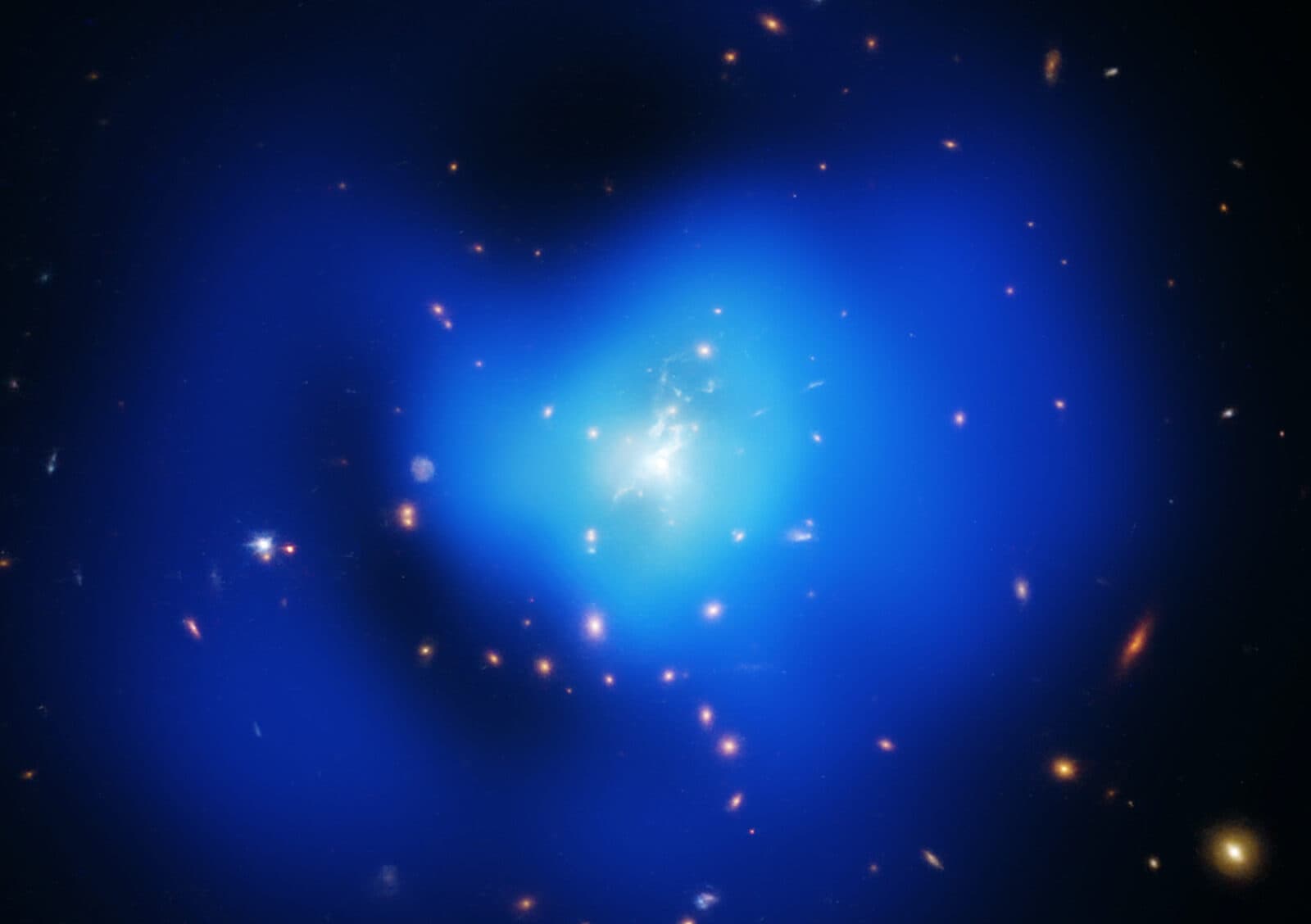Solving the Mystery of the Phoenix Cluster's Furious Starmaking
by Adam Hadhazy
Part 4 of our 'Looking Ahead to JWST' series centers on efforts to understand the workings of the famous Phoenix cluster, one of the most puzzling galaxy groupings known

The Author
The Researcher
The next era of deep space science will begin with the launch of JWST come late 2021. Debuting a suite of new technologies to keep its instruments super-chilled, JWST will take pristine, high-resolution observations of faint infrared light, enabling novel astrophysical investigations and a farther look back than ever before into the early universe.
Earlier this year, NASA announced the telescope's first year of slated observations—dubbed Cycle 1—based on proposals submitted by researchers worldwide. Several Kavli Institute-affiliated researchers are principal or co-principal investigators for approved Cycle 1 observation programs. This article is the fourth in a series profiling these greenlit JWST observer programs.
Astronomically speaking, galaxy clusters—great groupings of hundreds or even thousands of galaxies—are a dime a dozen. Yet the Phoenix Cluster is special. For starters, it's among the most massive galaxy clusters on record. It further stands out because its central, colossal galaxy is producing new stars at a breakneck pace. In most clusters, just as with Phoenix, the central galaxy gravitationally gobbles up tremendous amounts of starmaking gas, though in roughly 99% of clusters, that central galaxy does not translate all this mass into new stellar generations. That's because powerful jets hurled out by the supermassive black hole located in clusters' central galaxies prevent most of the gobbled-up gas from cooling down. Somehow, the usual star formation suppression mechanism is not in working order in the Phoenix Cluster.
"We're actually seeing that gas is being consumed and fueling huge amounts of star formation in the center of the cluster," explains Michael McDonald, an Associate Professor of Physics at the Massachusetts Institute for Technology's Kavli Institute for Astrophysics and Space Research. McDonald has long studied the Phoenix Cluster and has previously told The Kavli Foundation how it "throws a wrench" into our ideas of the evolution of cluster center galaxies.
Now McDonald and his colleagues hope to at last get to the bottom of the Phoenix mystery with a JWST-enabled observational program, for which McDonald is the program principal investigator. JWST's infrared vision will uniquely and unprecedentedly allow for a detailed accounting of the star-making gas—observations that can only be made beyond Earth's infrared-blocking and atmosphere.
"Our atmosphere is mostly opaque to infrared radiation and, to compound the issue, also glows brightly in the infrared due to the heat trapped by the greenhouse effect," says McDonald. "We're particularly excited to use JWST to map out the cooling gas in the center of the Phoenix cluster, which has never actually been done before for any cluster."
One of the leading theories to explain the existence of the Phoenix cluster, McDonald says, is that the cluster is in midst of a short-lived phase that most clusters go through. During this hypothetical phase, the central galaxy grows rapidly by consuming nearby gas. Assuming such a phase would only last for 10-20 million years—a cosmic eyeblink—astronomers should expect to capture this phase in less than 1% of all galaxy clusters at any given moment, accounting for the apparent rarity of Phoenix-like behavior.
"Phoenix provides a unique opportunity to study an important but short-lived phenomenon, in the same way that a well-timed photograph of a lightning strike captures a short-lived but very important phenomenon in atmospheric physics," says McDonald. "From these new data, we hope to learn more specific details of this rapid cooling and feeding phase, such as how the gas fuels the galaxy and central black hole, how the black hole jets interact with this gas, and where the stars are forming in the cooling gas."
In a Kavli-centric coincidence, the Phoenix cluster was originally discovered by the South Pole Telescope (SPT), located in (as its name implies) the heart of Antarctica. Multiple Kavli Institute-affiliated researchers are involved in SPT and The Kavli Foundation has helped support the project. Two of McDonald's colleagues on the JWST project are Steve Allen from the Kavli Institute for Particle Astrophysics and Cosmology (KIPAC) at Stanford University and Michael Gladders from the Kavli Institute for Cosmological Physics (KICP) at the University of Chicago.
Overall, quite a number of astrophysicists would welcome a solution to the Phoenix cluster riddle; all that may be required is a bit more patience, waiting for JWST to start its journey of exploration.